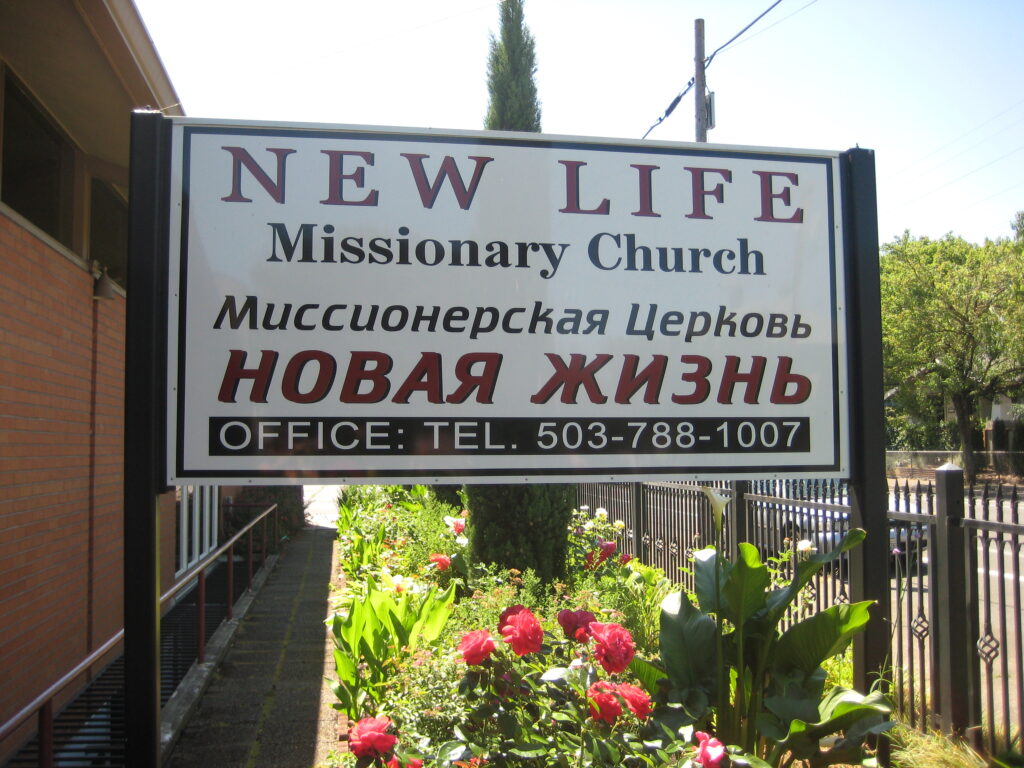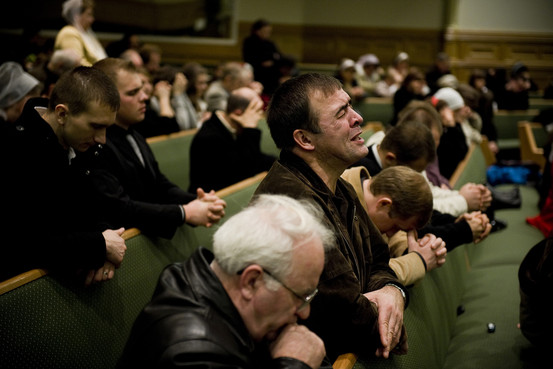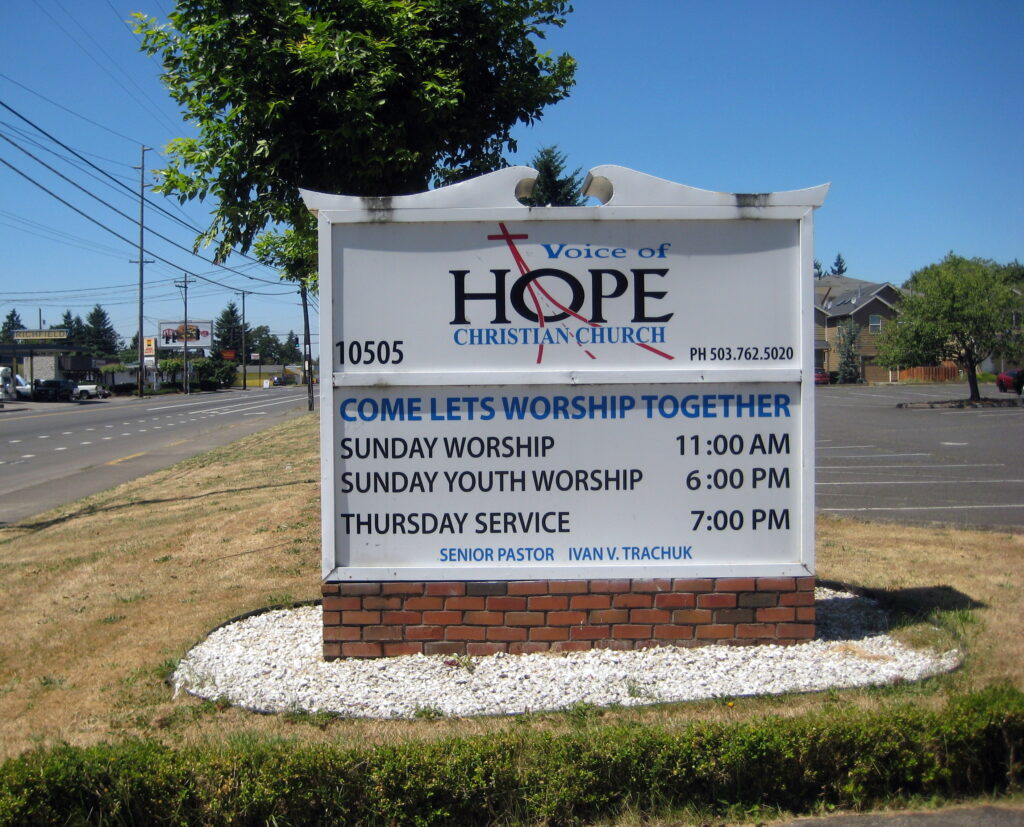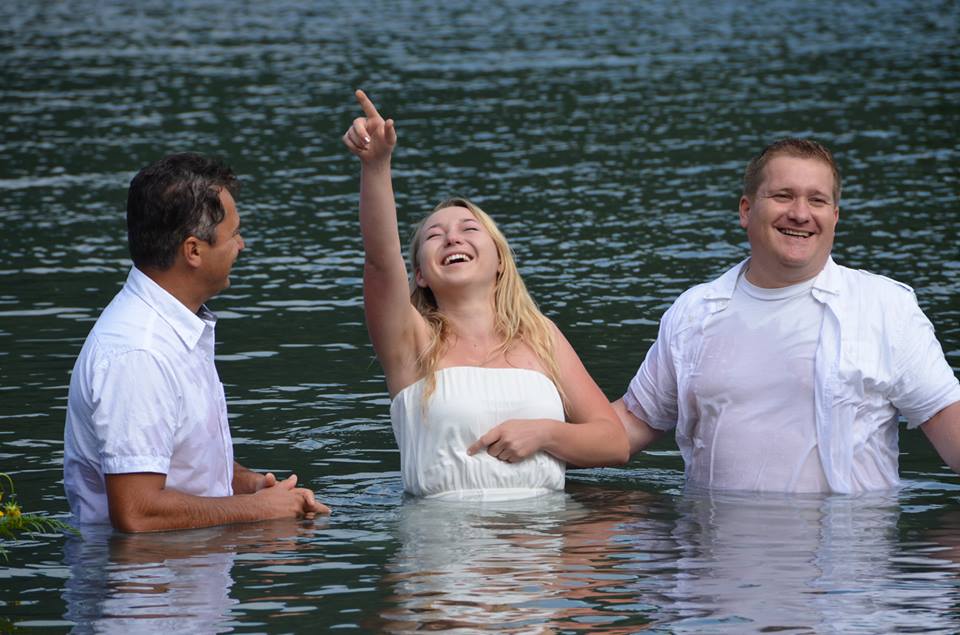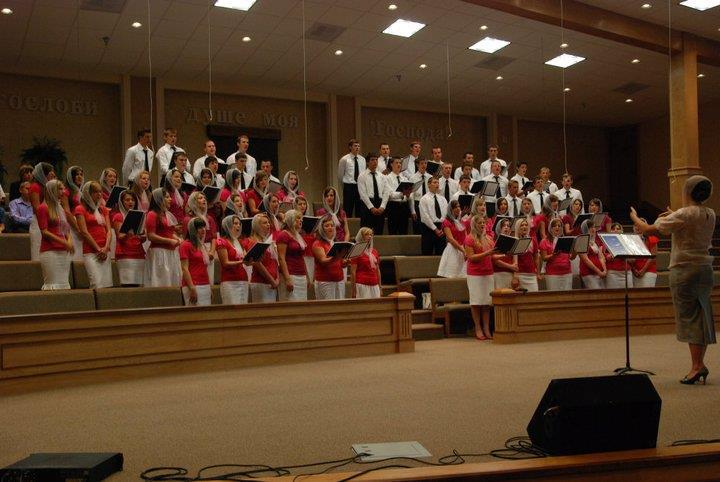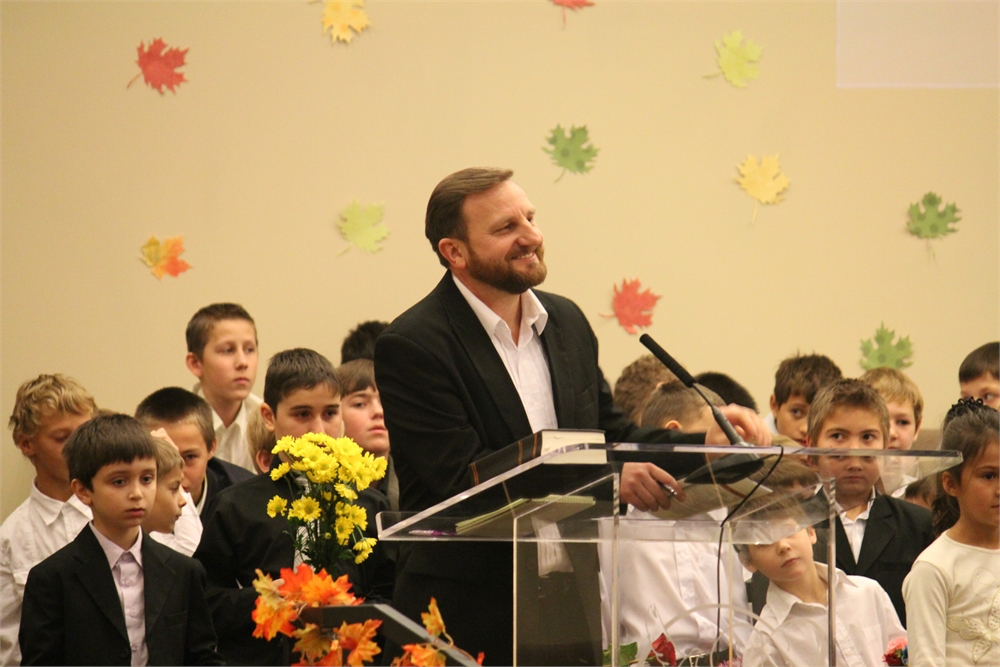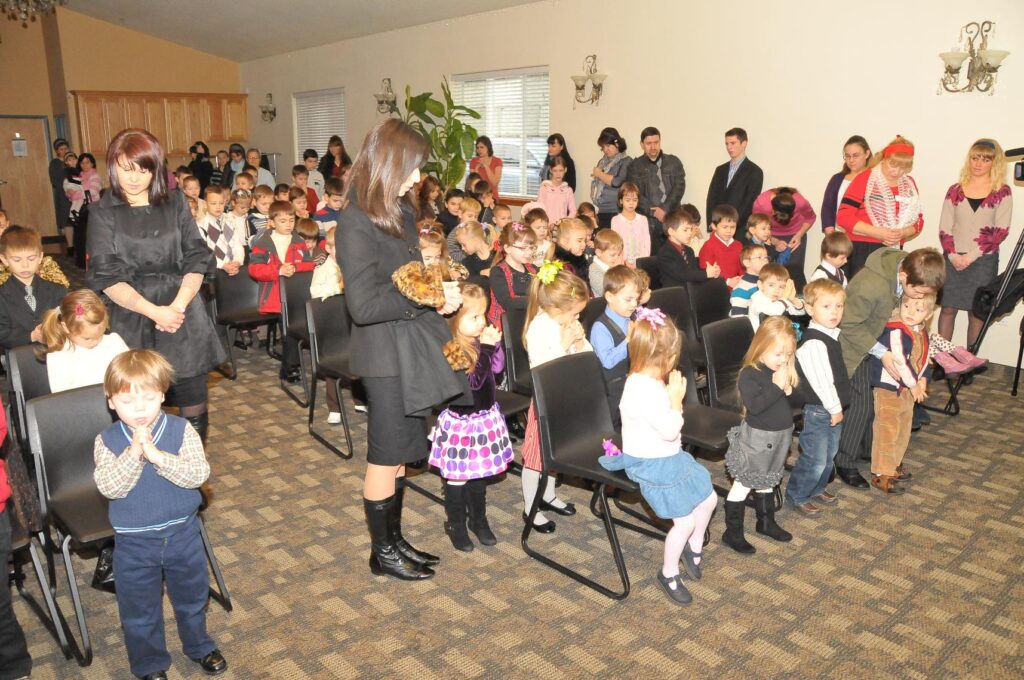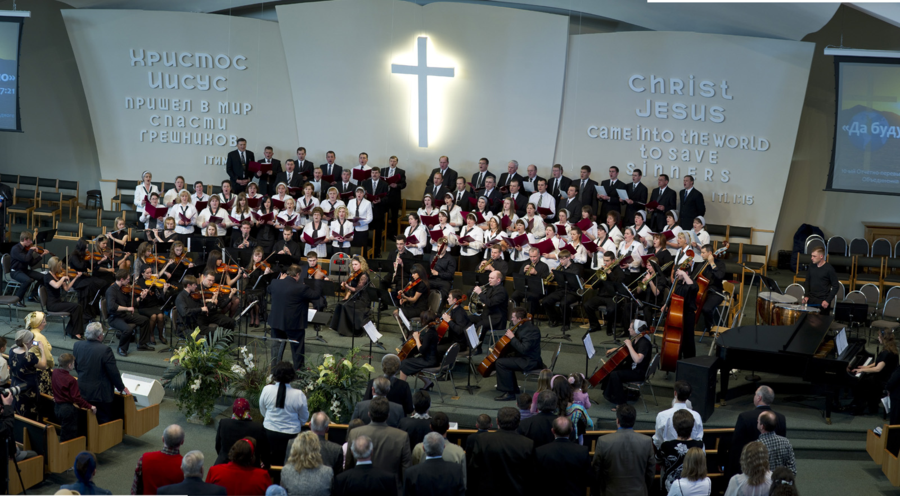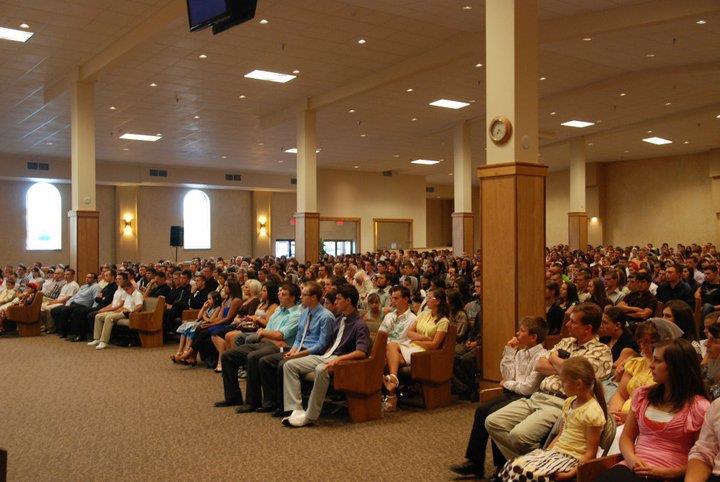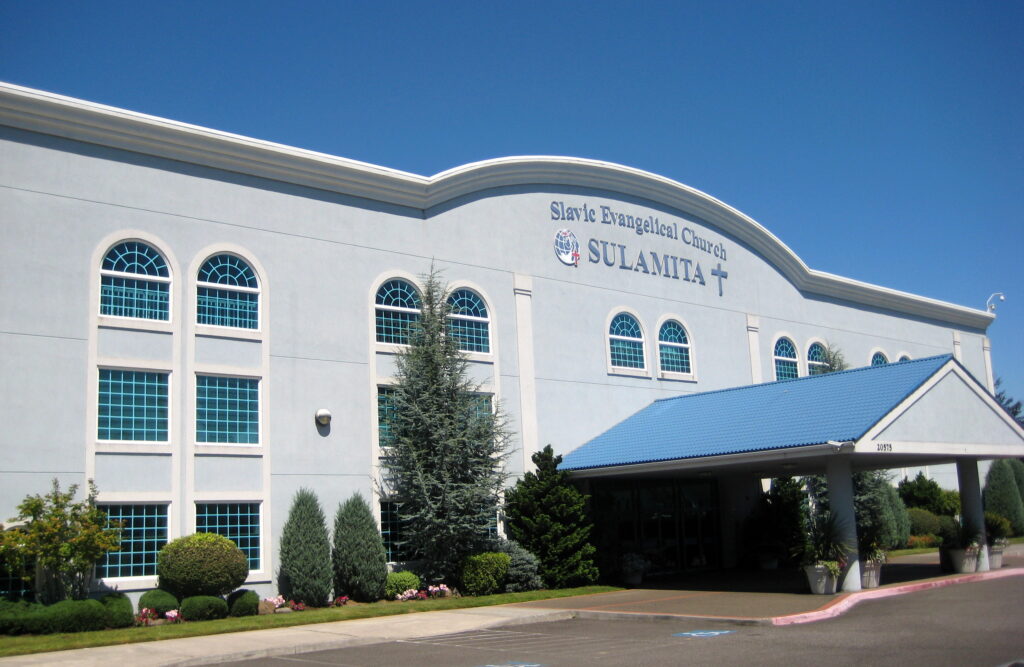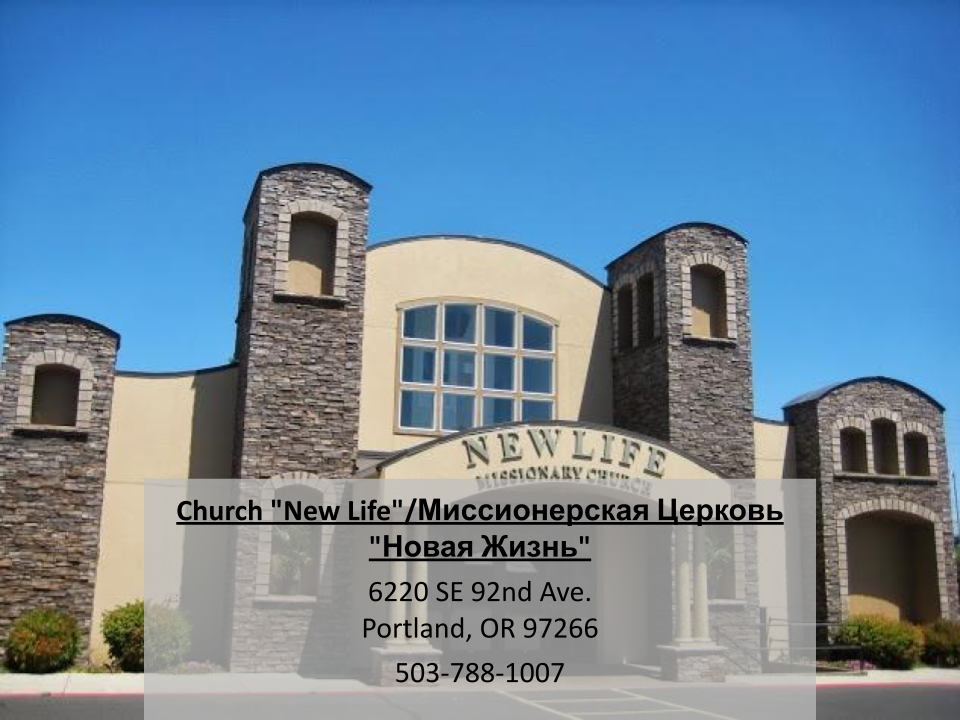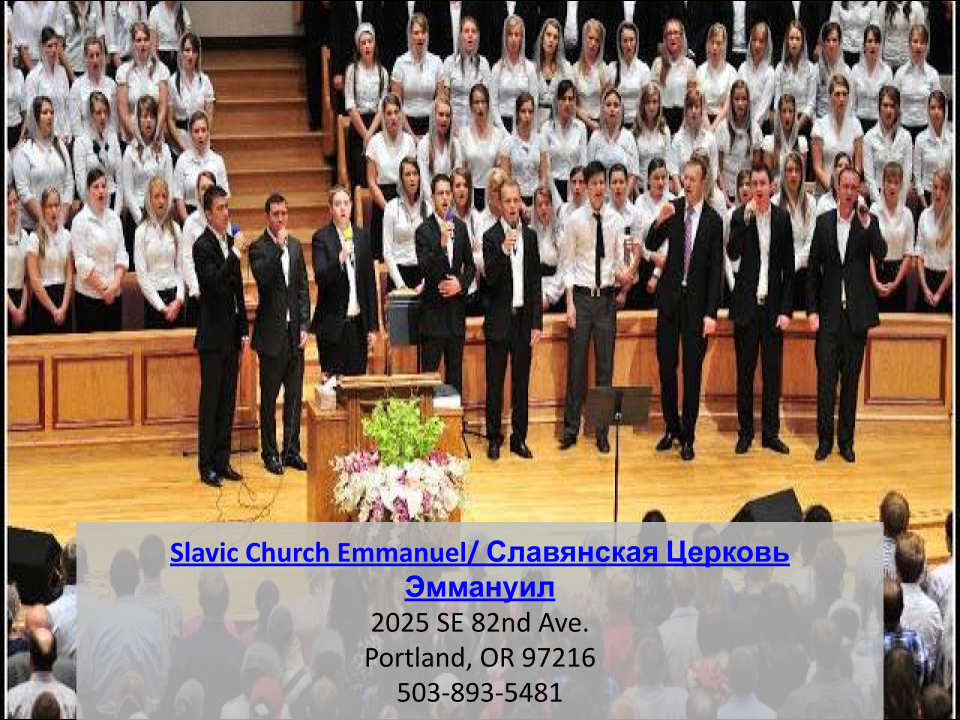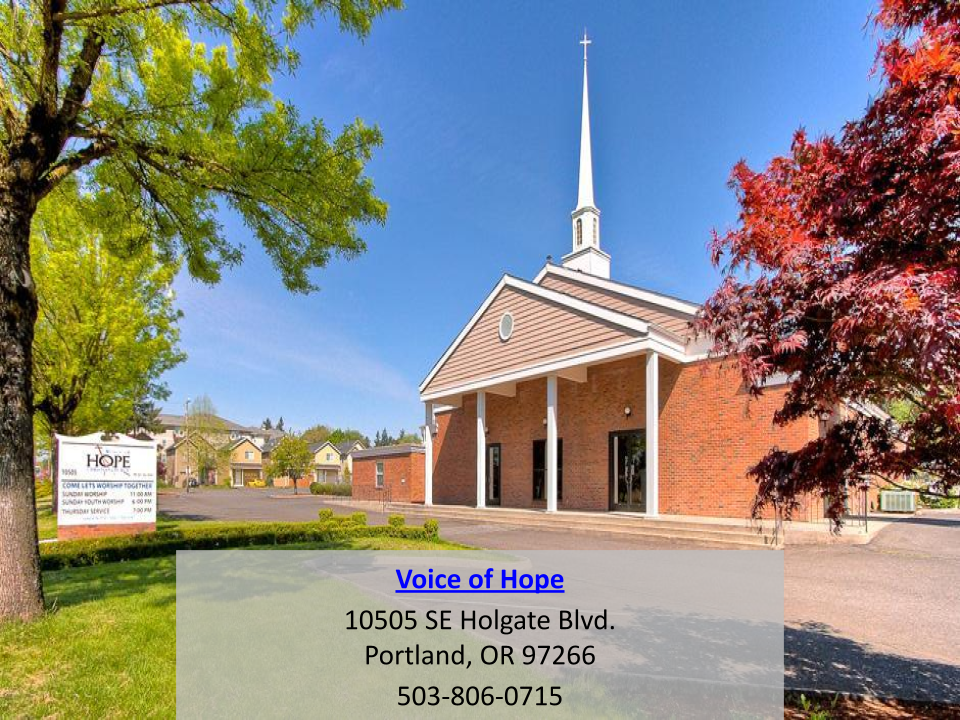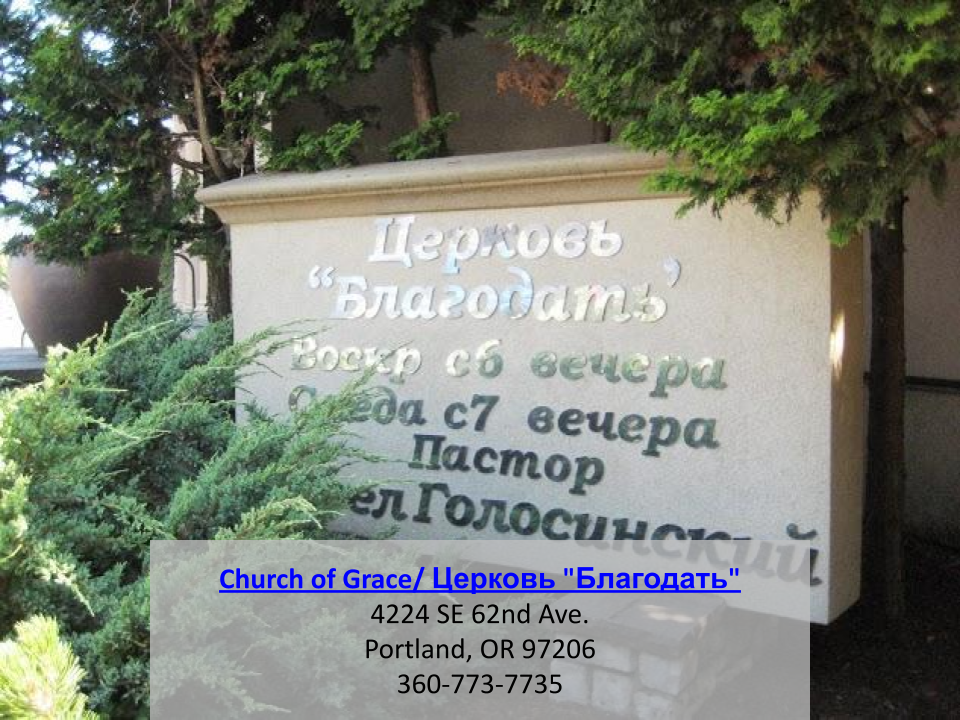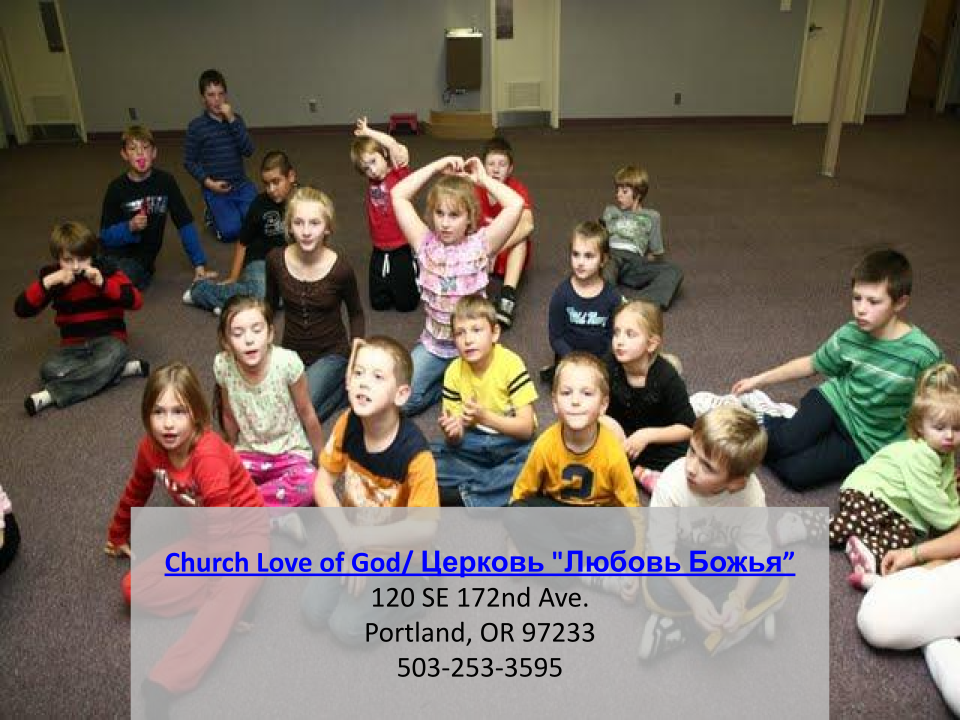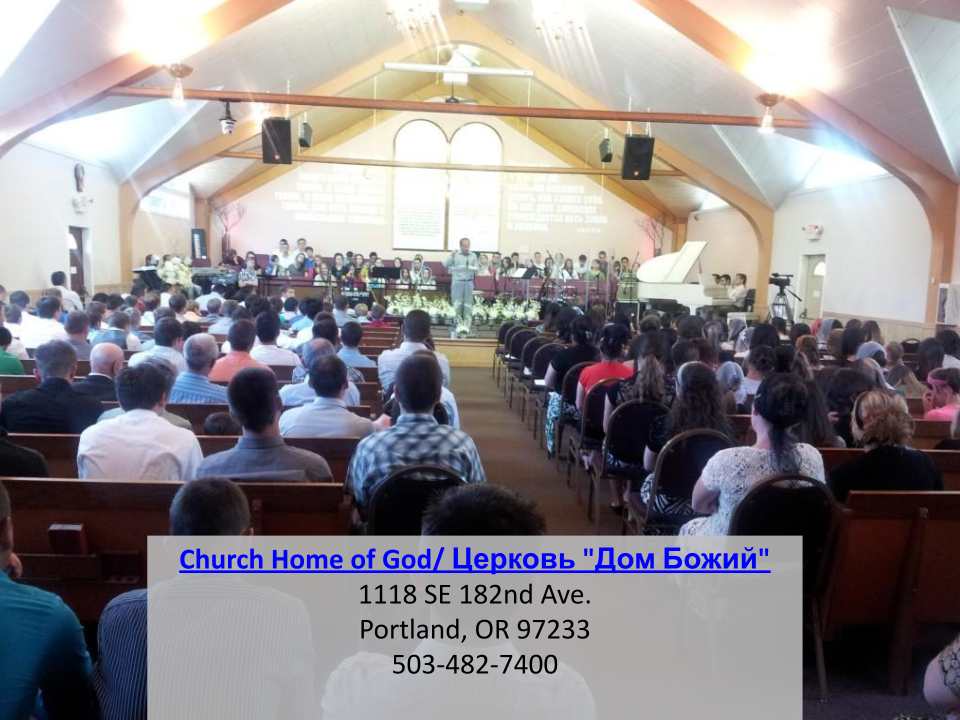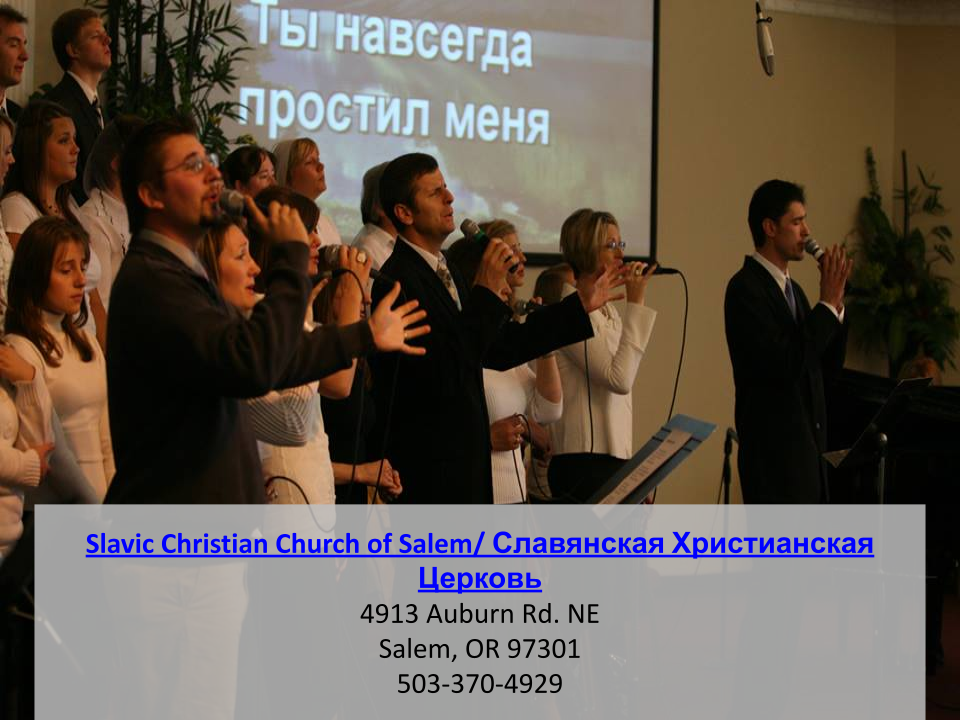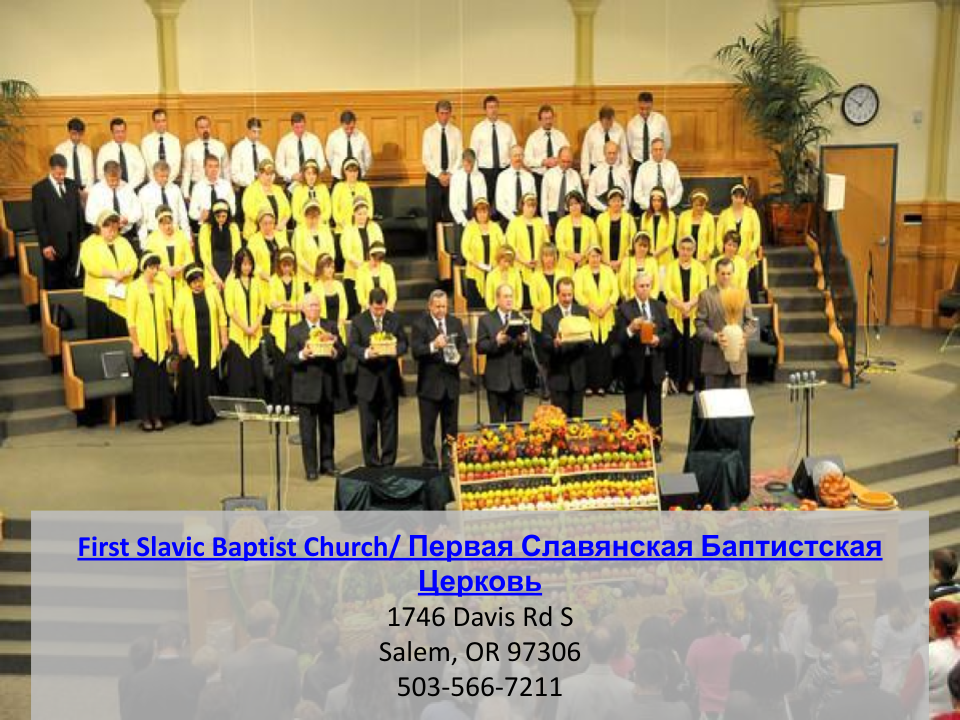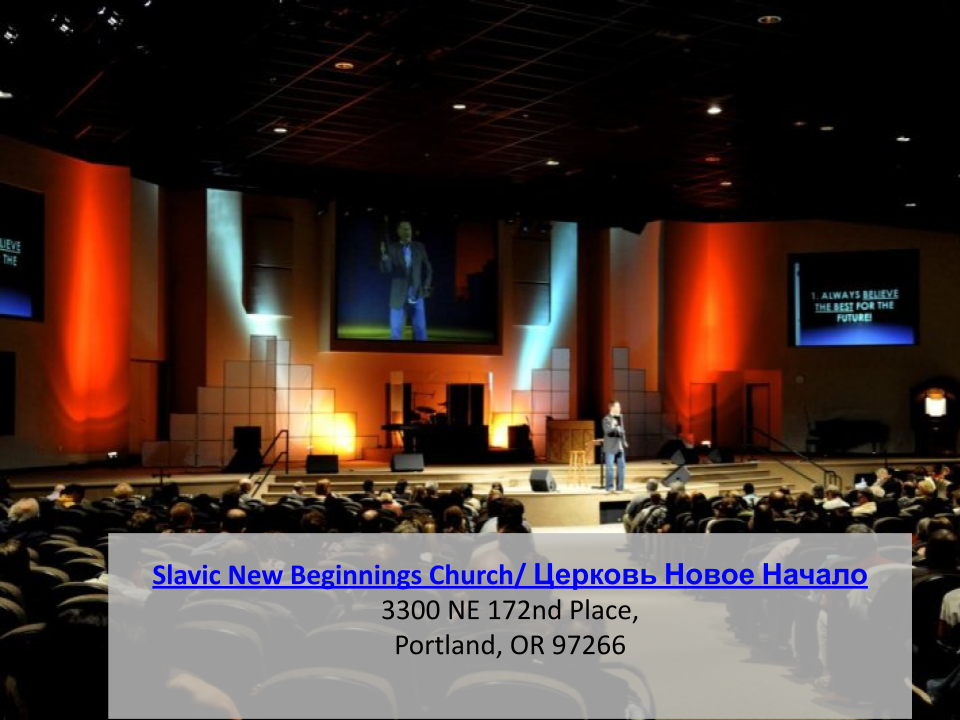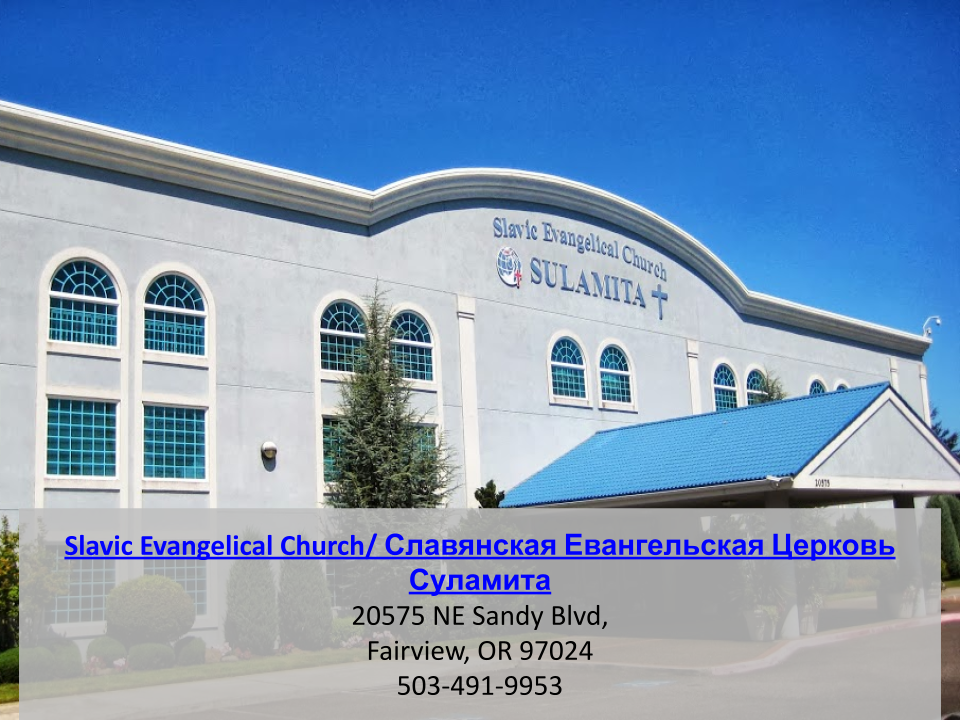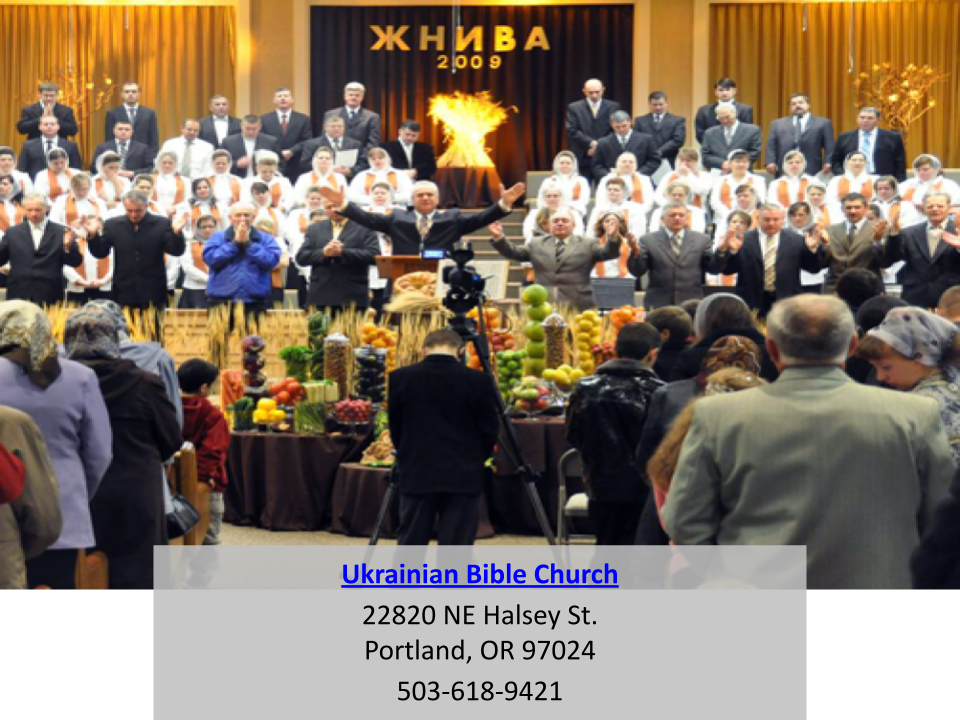Evangelical Christians
by Susan W. Hardwick
During the past two and a half decades, Oregon has emerged as one of the top two most important resettlement states for Russian-speaking evangelical refugees in the United States. These fundamentalist Christian newcomers were attracted to the Pacific Northwest by evangelical religious networks and sponsors, a well-organized system of social service and refugee resettlement agencies, and a physical environment that resembles their homeland.
Baptists were among the earliest of the evangelical groups to organize in the former Soviet Union and they remain the largest group in Russia today. Baptist beliefs were first brought into Russia from Germany in the 1830s when evangelical ministers encouraged Mennonites to practice baptism by immersion, experience conscious conversion, and hold revival meetings. Economic and political factors also contributed to the growth of early Protestant groups in Russia. After the Crimean War culminated in the emancipation of the serfs in Russia in 1861, a period of political and social reform became a major impetus to dramatic religious change. Thereafter, the openness to new ideas, translation of the Scriptures into vernacular Russian, improved literacy rates, and exposure to the corruption of the Orthodox Church hierarchy all encouraged the growth of Bible-based, fundamentalist Christian groups in Russia. In 1905, the continuing growth in the number of evangelical churches in Russia was encouraged by a government edict that permitted evangelicals to have freedom of assembly. Following the passage of this new and very important legislation, the All-Russian Evangelical Christian Union was formed that greatly expanded missionary work, published information, and conducted religious education in all parts of the country. This effort substantially increased the number of Evangelicals in Russia and the Soviet Union.
Much like early Baptist beliefs in Russia, the origin and spread of Pentecostalism began with believers from outside the country. In 1911, missionaries from the United States started the first Pentecostal congregation in Russia in Vyborg near the Finnish border. Drawing on the foundation of support provided by the rapid spread of evangelical Protestant beliefs sparked by the growth of the Baptist faith – and responding to an opening provided by an internal schism in Baptist church congregations in the area – Pentecostalism soon spread far and wide in Northwestern Russia. The expansion of Pentecostal beliefs in Russia/Soviet Union continued when a similar movement began in southern Russia in the early 1920s that was started by a Russian émigré who decided to return to his homeland (after serving as a Russian Baptist minister in San Francisco, and subsequently founding the first Russian Pentecostal church in New York City). In 1920, the activist missionary work of this Russian evangelical minister and his family took root in Odessa, a city that was to become the center of Pentecostalism in Eastern Europe and the former Soviet Union for many decades to come.
The diaspora of Russian-speaking evangelicals to the United States began with changes in both Soviet emigration policies and in U.S. refugee policies. First was the surprising 1988 policy change supported by the first and last president of the former Soviet Union, Mikhail Gorbachev, that allowed Russians to emigrate from their homeland for the first time since the Russian Revolution. The passage of this surprising new legislation, the efforts of the religious right in the United States to secure “refugee status” for Russian Baptists and Pentecostals, and a well-organized refugee resettlement system and evangelical church networks in the region resulted in a veritable flood of Russian evangelical Christians arriving in northern California, Oregon, and Washington in the late 1980s and early 1990s. Soon thereafter, these newcomers from the former Soviet Union were part of a massive chain migration of Slavic evangelical Christians into the Pacific Northwest and California. And since it is one of the top priorities of U.S. immigration policy to allow the family members of individuals already in residence in the U.S. to be legally admitted into the country, this policy also has greatly expanded the number of post-Soviet-era Russian evangelicals who now live in Oregon and in other nearby states.
Although the Portland area is now home to the largest number of Russian-speaking evangelicals in Oregon, the earliest Russians to settle in the state were attracted to the much smaller city of Woodburn. Woodburn is better known today for its majority Latino population and the early settlement of Russian Old Believers, but several other groups of Russians have also called Woodburn home during the past half century. The Old Believers, in fact, were first encouraged to move to “beautiful green Oregon” in the early 1960s by a group of Russian Molokans in Los Angeles during a refueling stop on their way by ship from the Far East to a newly secured Old Believer settlement in Brazil. These Russian Molokans were part of the first Protestant sect founded in Russia. As such, they were closely connected to another group of Molokans who had relocated to Woodburn and vicinity from California in the 1950s. These Woodburn area Molokans not only were the earliest Russian Protestant group to arrive in Oregon, they also served as the sponsors for incoming Old Believers when they arrived in Oregon from Brazil in the mid-1960s.
Along with these Russian Molokans and Russian Old Believers, the Woodburn area has also long been home to a group of Russian Evangelicals who have played a major role in sponsoring what has become, by far, the largest wave of Russian immigration in history into the state. The arrival of this large group of evangelical Russian refugees began when the pastor of the Russian Gospel Church in tiny Hubbard located only a few miles from Woodburn, received a surprising and long awaited phone call from a fellow evangelical pastor in the former Soviet Union. This call alerted him to the news that the Soviet government had just approved the departure of one of the Pentecostal families in the USSR that this Hubbard church had offered to sponsor for emigration to the United States. Shortly thereafter, as mentioned above, Russian evangelicals were granted the right to leave their homeland after new and more open policies were set in motion by Soviet president Mikhail Gorbachev. Three years later, after the break-up of the Soviet Union, several thousand Russian Evangelicals flooded into Oregon with the majority arriving in Hubbard – the site of the only Russian Pentecostal church in Oregon.
Overwhelmed by this unexpectedly large number of new arrivals, church leaders asked the state’s largest refugee resettlement agency in Portland for help. This agency, now known as the Oregon Immigrant and Refugee Community Organization (IRCO), was originally founded in the early 1970s to provide assistance for Southeast Asian refugees in Oregon who arrived during and after the Vietnam War. Today, IRCO is the lead agency for the resettlement of all refugees in Oregon. It works closely with other social service agencies in Oregon such as Oregon-based VOLAGS (Voluntary Organizations), and with the federal refugee resettlement office in Salem to provide assistance for incoming refugees. This large and complex resettlement agency, which employs more than 180 multilingual social workers, teachers, and other staff, provides English language classes, employment training, and job placement during the first eight month of refugees’ residency in the state. New refugees are most often resettled in small apartments or rental houses in eastside Portland in or near the Gateway District. This part of the city has a large stock of affordable housing and it is also located in close proximity to the employment, public transportation, and social service needs of newly arriving migrants.
Today, Slavic evangelicals have become an important part of the fabric of life in Portland’s eastside neighborhoods, especially in the Foster Road and Gateway areas. They also form a significantly large percentage of the population of suburban communities such as Gresham and Happy Valley as well as other places in suburban Portland such as Beaverton and Hillsboro. Several thousand Russian-speaking evangelicals also reside in the mid-Willamette Valley cities and town of Salem, Tangent, Woodburn, Hubbard, and Gervais. Along with the more than one hundred Slavic evangelical churches that have been constructed in these Willamette Valley cities and towns, Slavic evangelicals also have made a significant contribution to the construction and service industries in Oregon. In addition, according to the Oregon Slavic Directory, Russian-speaking entrepreneurs now own and operate more than 400 businesses in the Portland area and at least three stores in Salem that cater to the Russian-speaking market. Others have found employment in Oregon’s numerous social service agencies and a number of the state’s education and religious institutions.
Oregon is now home to one of the largest and most cohesive Slavic evangelical populations in the United States. Beginning with the earliest arrival of Russian Pentecostals in Woodburn in the 1950s – and the construction of Oregon’s first Russian Pentecostal church shortly thereafter in nearby Hubbard – Russian evangelicals have formed the largest piece of the ongoing migration stream of Russian refugees and immigrants settling in Oregon. Religious networks and church sponsors continue to play a vitally important role in encouraging the chain migration of the now more than sixty thousand Russian evangelicals who live in Portland and other smaller cities and towns in Oregon. These networks have encouraged the settlement of distinctive ethno-religious urban, suburban, and exurban Russian nodes along the I-5 corridor stretching from Salem to Woodburn to Portland – and extending as far north as far as Bellingham, Washington. The work of antecedent Russian evangelical congregations in this part of the Pacific Northwest has not only resulted in a clustering of like-minded believers in particular places, it has also helped set in motion an unexpectedly large wave of post-Soviet-era Russian settlement in the state. As Oregon becomes ever more diverse now and in the future, Russian-speaking Oregonians will continue to add a rich layer of cultural, religious, and ethnic diversity to life and landscape here and in other parts of the Pacific Northwest for many years to come.
Selected bibliography:
Blane, A. The Relations between the Russian Protestant Sects and the State. Ph.D. dissertation, Duke University, 1964.
Bourdeaux, M. Gorbachev, Glasnost, and the Gospel. London: Hodder and Stoughton, 1990.
Dunn, Ethel. The Molokan Heritage Collection. Berkeley: Highgate Road Social Science Research Station, 1983-1992.
Hardwick, Susan Wiley. Russian Refuge: Religion, Migration, and Settlement on the North American Pacific Rim. Chicago: University of Chicago Press, 1993.
Hardwick, Susan W. Far from Home: Slavic Refugees and the Changing Face of Oregon. Portland: Oregon Council for the Humanities, 2007.
Hardwick, Susan W. and James E. Meacham. “’Placing’ the Refugee Diaspora to Portland, Oregon: Suburban Expansion and Densification in a Re-Emerging Gateway,” (in) Twenty-First Century Gateways: Immigrant Incorporation in Suburban America. A. Singer, S.W. Hardwick, and C. Brettell, eds. Washington, DC: The Brookings Institution, 2008.
Hardwick, Susan W. and James E. Meacham. “Heterolocalism, Networks of Ethnicity, and Refugee Communities in the Pacific Northwest: The Portland Story,” The Professional Geographer 57:539-557, 2005.
Kritz, Mary, ed. U.S. Immigration and Refugee Policies: Global and Domestic Issues. Lexington, MA: Lexington Books, 1983.
Libov, Victoria. Personal interviews. Portland, OR: Immigrant and Refugee Community Center, 2005-2007.
Pollock, J.C. The Faith of the Russian Evangelicals. New York: McGraw-Hill Book Company, 1964,
Ray, Brian. Project Interwoven Tapestry: Building the New American Community in Portland, Oregon. Washington, DC: National Conference of State Legislatures and Migration Policy Institute, 2004.

